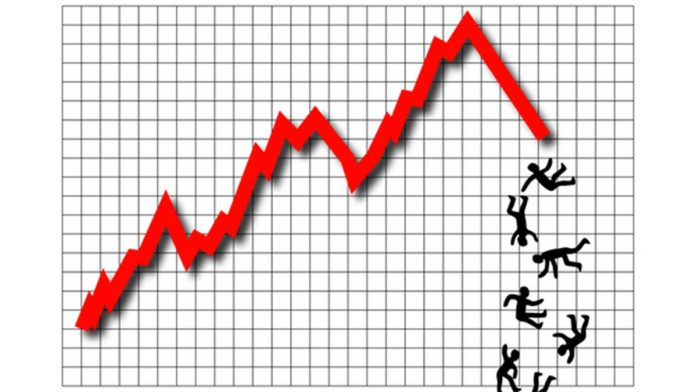Q: When the stock market crashed back in 2008-2009, I sold everything and went to cash. And now all these years later I’ve missed out on all the market upside. I’m fearful about going back in now. What should I do?
A: You’re certainly not the only one who had this experience. It’s common for people to allow their emotions to impact their short-term investment decisions, often in ways that can have significant impact on their performance. Here are some thoughts on a better approach for if/when you decide to invest again.
Buy low and sell high. It sounds so easy. Surely anyone who follows the market’s latest gyrations and stays abreast of economic and earnings news can anticipate and capitalize on these movements, right?
Perhaps not. In fact, as history has shown — over and over — trying to time the market is a losing game. Much research has been done on the topic. Stock-market theorists and academics — including industry heavyweights William Sharpe, Benjamin Graham and John Bogle — have all come to the same conclusion: Trying to beat the market by timing its ups and downs is a roll of the dice.
Even the experts cannot predict consistently the market’s random walk. A landmark study by CXO Advisory Group tracked over 4,500 forecasts between 2000-12 of 28 well-known market-timing gurus. The study showed that only 10 were able to predict accurately over 50 percent of the time, and that none accurately predicted enough to make the strategy consistently outperform the market.1
The simple truth is that nobody can guess the market correctly over time. Or, as Bogle put it, “I not only have never met anybody who knew how to do it, I’ve never met anybody who had met anybody who knew how to do it.”2 Some can make a good call now and then; others may even time both top and bottom in a given market cycle. But over the long run, the law of averages — reversion to the mean — will eventually win out, effectively rendering a market timing strategy a game of chance.
There is also human nature to factor in. People tend to sell in a panic at the bottom and buy in a flush of confidence at the top. Behaviors such as loss aversion, overconfidence, anchoring and avoidance all enter into buy/sell decisions, adding emotion into what is already a chance call.
Even if you correctly guess a good time to sell, when do you get back in? With rates on liquid, short-term investment vehicles still hovering near historic lows, the opportunity cost of staying out of the market can be significant.
The effect of missing top performance periods for stocks, past 30 years3
This chart shows how returns might have been affected by missing the 12 top-performing months during 10-, 20-, and 30-year periods, assuming that investment performance mirrored the performance of the S&P 500 index. For example, for the 10-year period from January 2008 to December 2017, missing the top 12 months could have reduced an investor’s annualized return by over nine percentage points. For each holding period shown, investors who remained invested for the entire period might have achieved higher returns than those who tried to time the market and missed, although past performance is no guarantee of future results.
So if you find yourself tempted by a market-timing strategy, think again. Instead, follow a well-coordinated investment strategy that is based on your personal risk tolerance and timeframe. Or, consider a regular investing strategy such as dollar-cost averaging (DCA).4
A systematic investing strategy
The idea behind DCA is a simple one: Instead of trying to “time the market” — and potentially buying or selling at the wrong time — you invest a set amount of money at regular intervals. This means that you automatically buy more shares when prices drop and fewer when prices rise. When you compare the higher and lower share prices you’ve paid over time with the number of shares you’ve accumulated, you may see an interesting trend develop: The average cost per share may be lower than the average price per share.
DCA puts the decision of when and how much to invest on autopilot. Since your investment moves are consistent and automatic, it helps you ease into investing, eliminating much of the guesswork, while potentially letting the market’s short-term price fluctuations work in your favor.
Although DCA cannot guarantee a profit or protect you from losses, it may help you avoid the temptations of market timing. n
Jeremy R. Gussick is a CERTIFIED FINANCIAL PLANNER™ professional affiliated with LPL Financial, the nation’s largest independent broker-dealer.* Jeremy specializes in the financial planning and retirement income needs of the LGBT community and was recently named a 2017 FIVE STAR Wealth Manager as mentioned in Philadelphia Magazine.** He is active with several LGBT organizations in the Philadelphia region, including DVLF (Delaware Valley Legacy Fund) and the Independence Business Alliance (IBA), the Philadelphia Region’s LGBT Chamber of Commerce. OutMoney appears monthly. If you have a question for Jeremy, you can contact him via email at [email protected].
Jeremy Gussick is a Registered Representative with, and securities and advisory services are offered through LPL Financial, a Registered Investment Advisor, Member FINRA/SIPC.
1Index Fund Advisors, Inc. (IFA.com), 2014. Based on a study by CXO Advisory, copyright: CXO Advisory Group LLC. http://www.ifa.com/12steps/step4.
2”Calming Words for Troubled Times,” money.cnn.com, last modified April 28, 2008.
3Source: ChartSource®, DST Systems, Inc. For the period from January 1, 1988, through December 31, 2017. Based on the total returns of the S&P 500 index. It is not possible to invest directly in an index. Index performance does not reflect the effects of investing costs and taxes. Actual results would vary from benchmarks and would likely have been lower. Past performance is not a guarantee of future results.
4Dollar-cost averaging involves regular, periodic investments in securities regardless of price levels. You should consider your financial ability to continue purchasing shares through periods of high and low prices. This plan does not assure a profit and does not protect against loss in any markets.
This article was prepared with the assistance of DST Systems Inc. The opinions voiced in this material are for general information only and are not intended to provide specific advice or recommendations for any individual. We suggest that you discuss your specific situation with a qualified tax or legal advisor. Please consult me if you have any questions. All performance referenced is historical and is no guarantee of future results. All indices are unmanaged and may not be invested into directly. LPL Financial Representatives offer access to Trust Services through The Private Trust Company N.A., an affiliate of LPL Financial.
Because of the possibility of human or mechanical error by DST Systems Inc. or its sources, neither Wealth Management Systems Inc. nor its sources guarantees the accuracy, adequacy, completeness or availability of any information and is not responsible for any errors or omissions or for the results obtained from the use of such information. In no event shall DST Systems Inc. be liable for any indirect, special or consequential damages in connection with subscribers’ or others’ use of the content.
To the extent you are receiving investment advice from a separately registered independent investment advisor, please note that LPL Financial LLC is not an affiliate of and makes no representation with respect to such entity.
*As reported by Financial Planning magazine, June 1996-2017, based on total revenues.
**Award based on 10 objective criteria associated with providing quality services to clients such as credentials, experience, and assets under management among other factors. Wealth managers do not pay a fee to be considered or placed on the final list of 2017 Five Star Wealth Managers.

